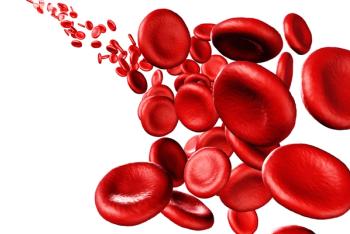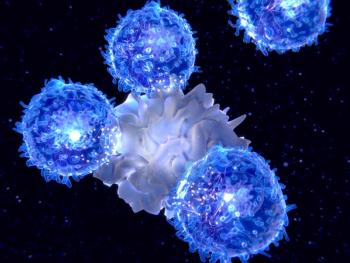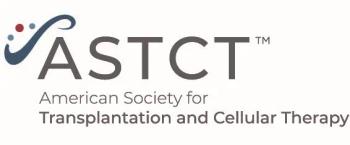
23-Gene Signature Predicts Risk of Follicular Lymphoma Progression
FL progression risk at 2 years was twice as high in the high-risk vs the low-risk group, and the gene-expression score may help to guide treatment.
A new 23-gene expression signature predicts which patients with follicular lymphoma face a high risk of early disease progression, according to a report
“Applying this score could allow individualized therapy for patients according to their risk category,” reported lead study author Sarah Huet, PhD, of the Cancer Research Center of Lyon in France, and colleagues.
Survival times range from 2 years to more than 20 years after diagnosis of follicular lymphoma, depending largely on early disease progression or transformation to more aggressive disease during the 24 months following treatment. Up to 25% of symptomatic patients do not respond well to rituximab-era immunochemotherapy.
Predicting which patients will experience disease progression has proven to be an elusive goal, however. Traditional risk stratification efforts employing clinical Follicular Lymphoma International Prognostic Index (FLIPI) scores “remain fairly blunt tools without the resolution to direct management decisions,” noted Shamzah Araf, MRCP, MBBS, and coauthors of a commentary
The research team sought to develop a prognostic gene expression tool that can differentiate patients who are at high risk vs low risk of early disease progression. For initial development of the predictive signature, they analyzed gene expression data from 134 pretreatment tumor samples from patients enrolled in the phase III PRIMA trial who had undergone induction therapy with rituximab plus chemotherapy, followed by rituximab maintenance therapy. The median follow-up for the PRIMA patient cohort was 6.6 years.
Of 395 initially identified progression-associated loci, 23 genes that exhibited strong statistical correlations with disease progression were used to devise a predictive multigene score and to identify threshold score values that could be used to differentiate patients at high and low risk of progression.
The researchers then validated the model using a total of 460 evaluable formalin-fixed, paraffin-embedded pretreatment/diagnostic biopsy samples from three clinical trial patient cohorts (the PRIMA trial cohort, University of Iowa/Mayo Clinic Lymphoma SPORE project cohort, and the Barcelona Hospital Clinic cohort). All patients had been diagnosed with grade 1-3A follicular lymphoma and were treated with rituximab-based induction chemoimmunotherapy followed by rituximab maintenance therapy or consolidation with ibritumomab tiuxetan.
In multivariate analyses adjusting for FLIPI score and post-induction treatment regimen, progression-free survival (PFS) correlated with increased risk of disease progression (adjusted hazard ratio [aHR] for high risk compared with low risk, 3.68; 95% CI, 2.19–6.17; P < .0001). Five-year PFS was 26% in the high-risk score group and 73% in the low-risk group.
The predictive power of the gene expression scores were confirmed for each of the three validation cohorts. For all three validation cohorts combined, median PFS was 3.1 years in the high-risk group compared with 10.8 years in the low-risk group (P < .0001).
“The risk of lymphoma progression at 2 years was 38% (95% CI, 29% to 46%) in the high-risk group and 19% (15% to 24%) in the low-risk group,” the authors reported.
“Together with clinical parameters such as the FLIPI index, this score might allow clinicians to better adjust existing therapeutic options according to the patient risk category,” the study authors concluded. “For patients at low risk of progression, short treatments with a low toxicity profile should be considered. For patients with high-risk FLIPI and 23-gene scores, having a 50% risk estimate of lymphoma progression at 2 years, new treatment options should be developed.”
Newsletter
Stay up to date on recent advances in the multidisciplinary approach to cancer.

















































































